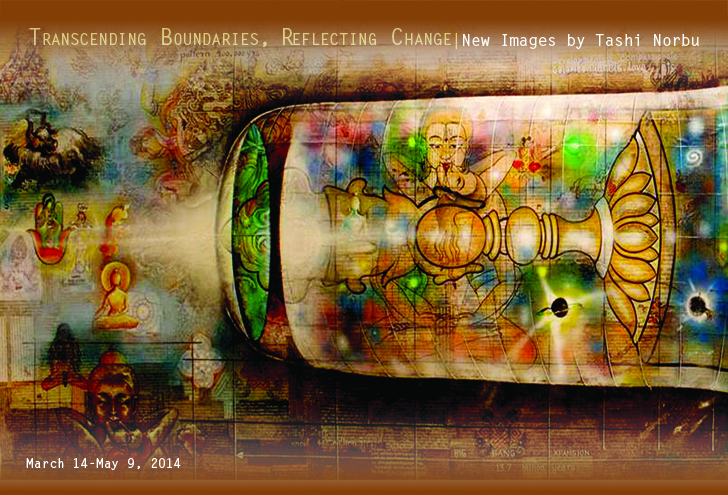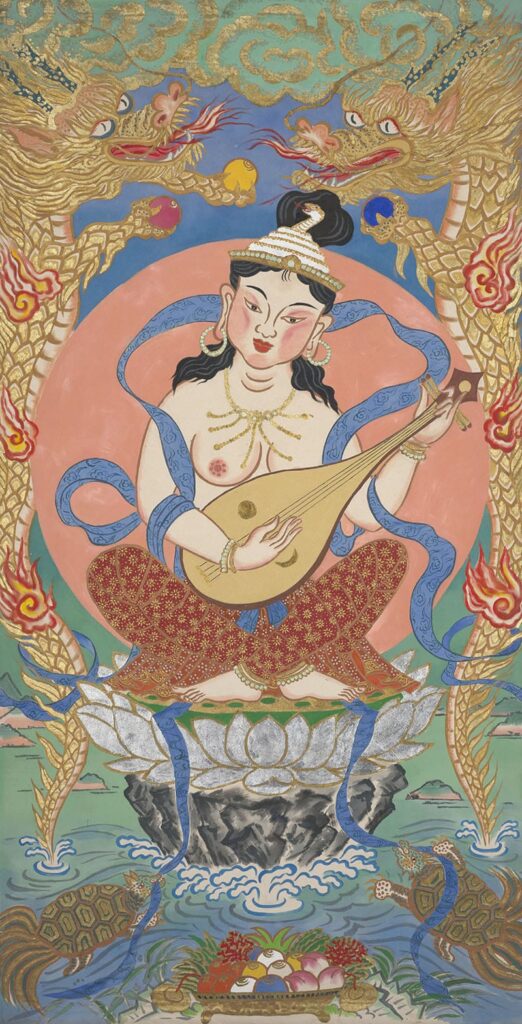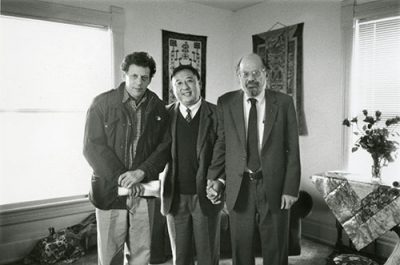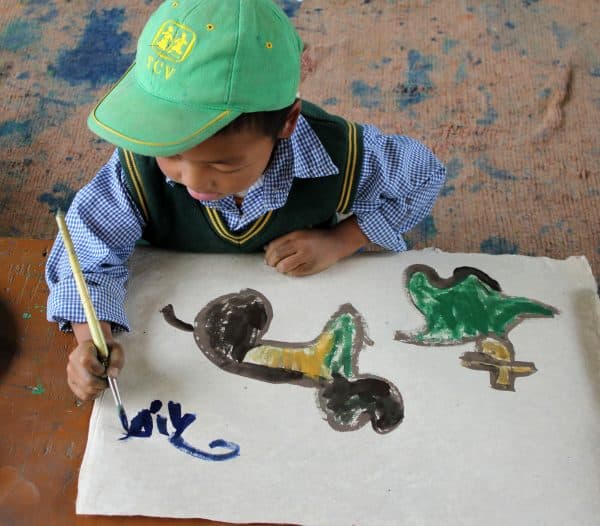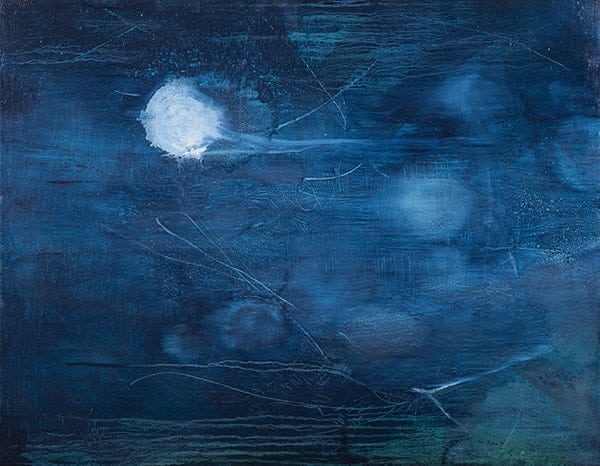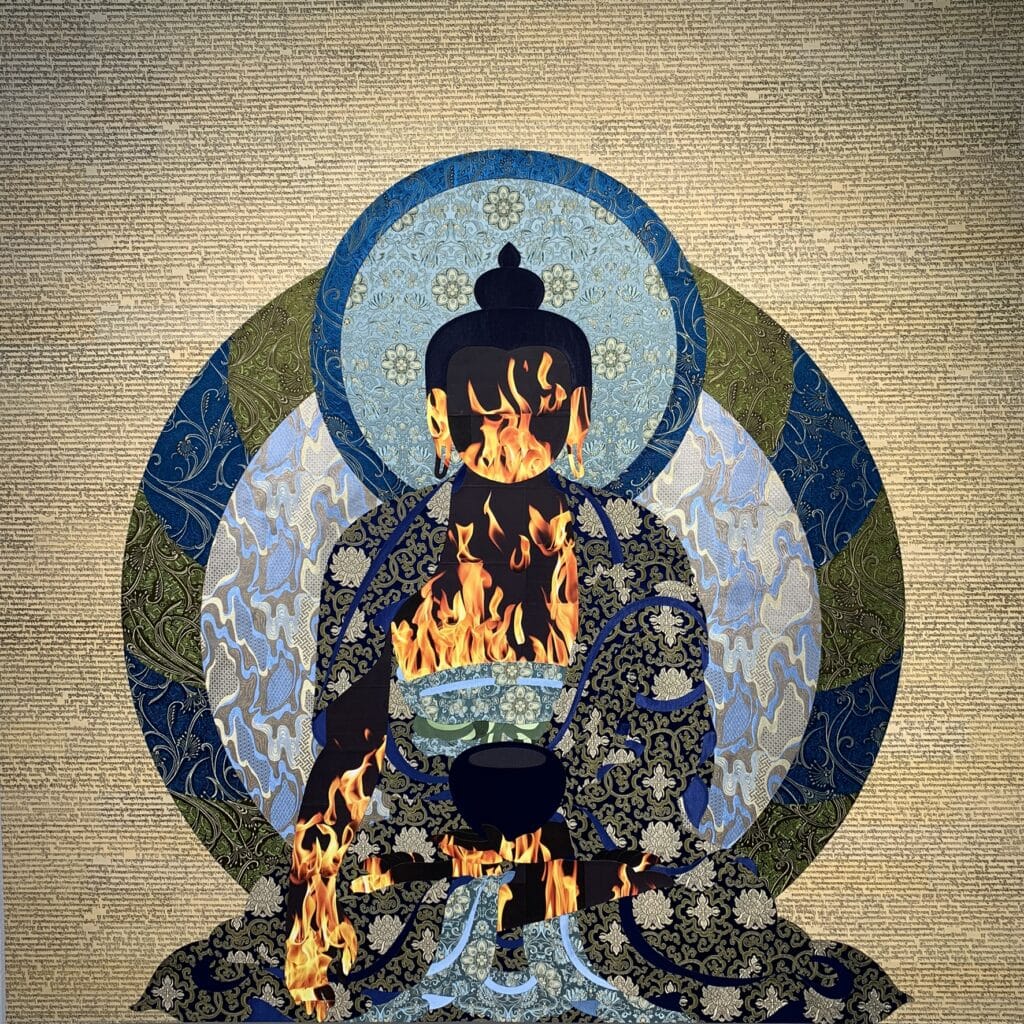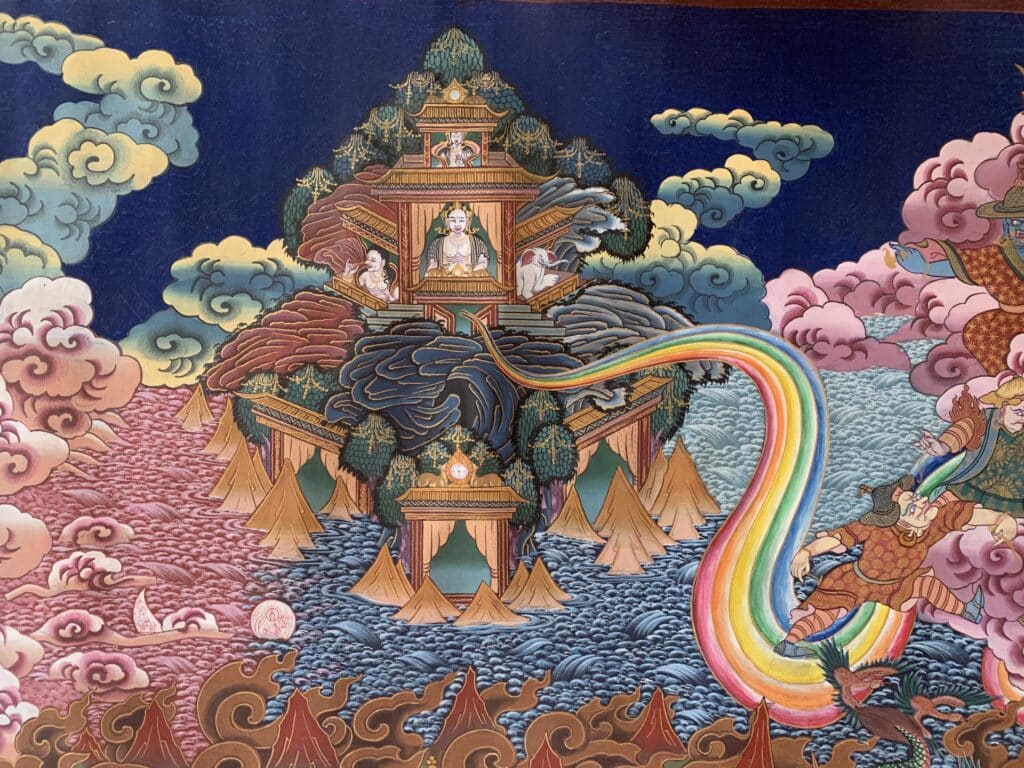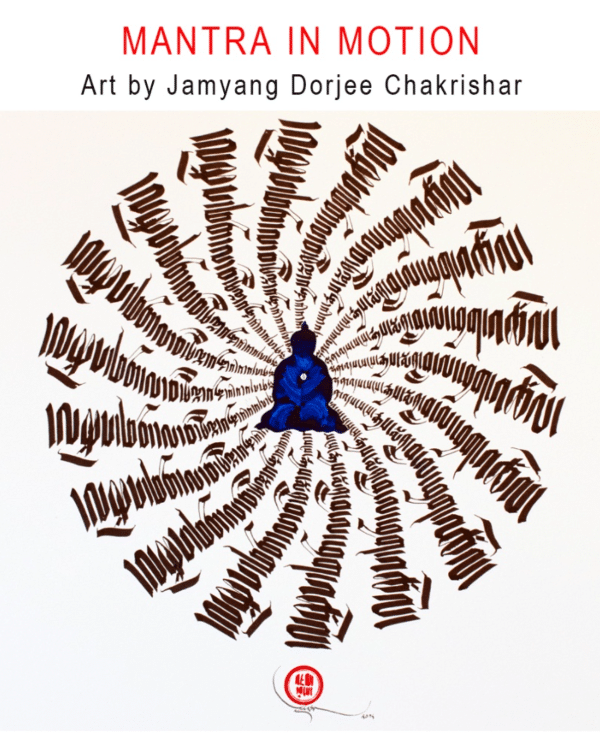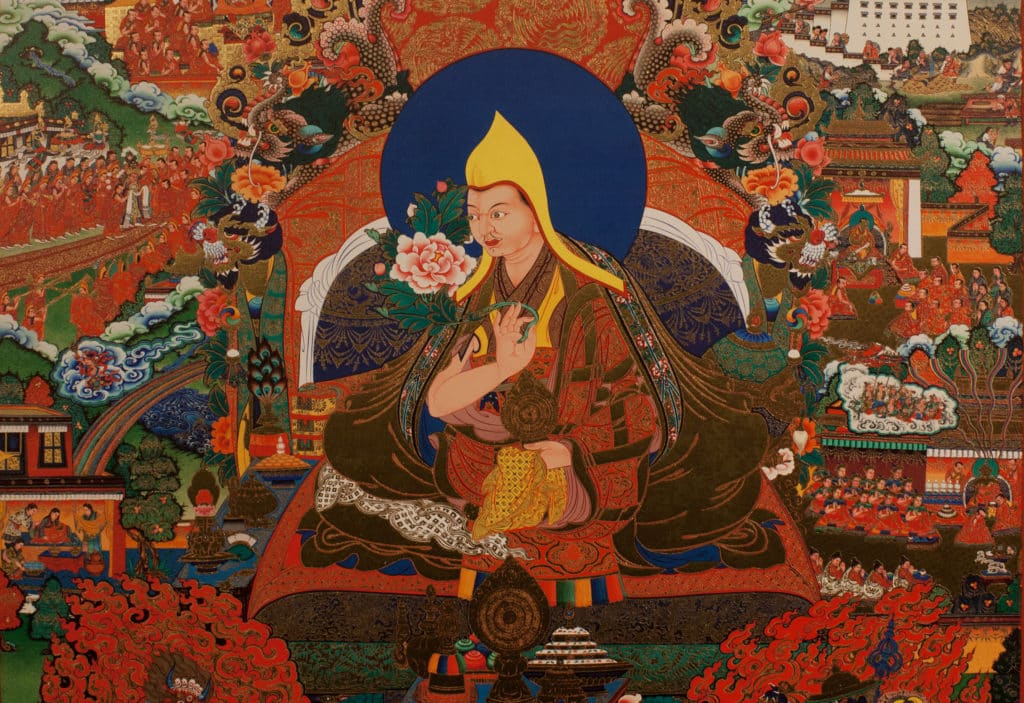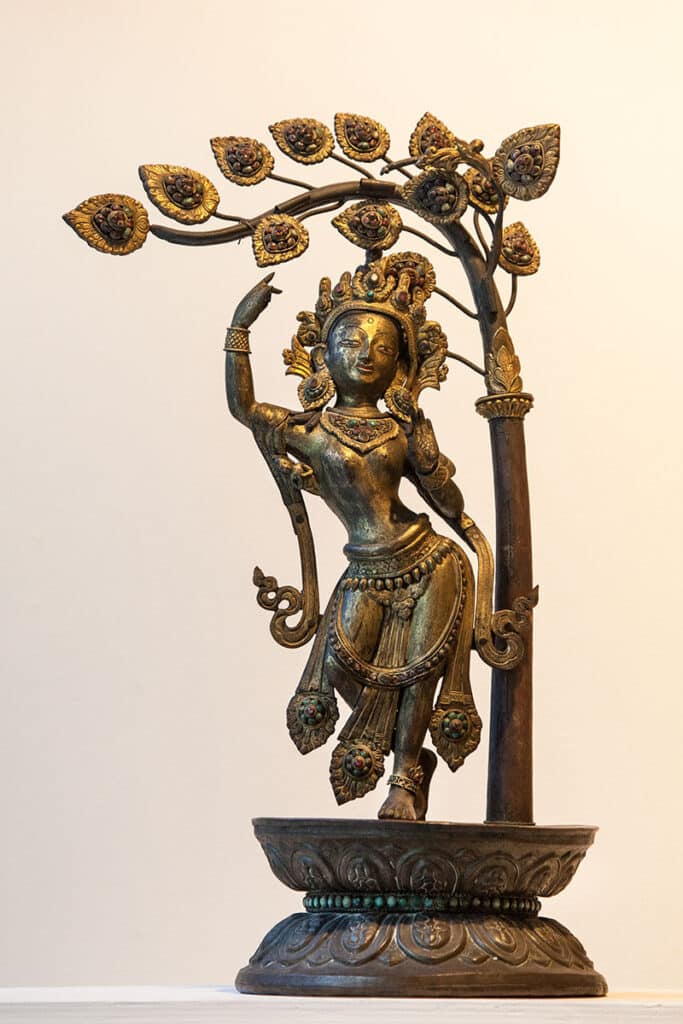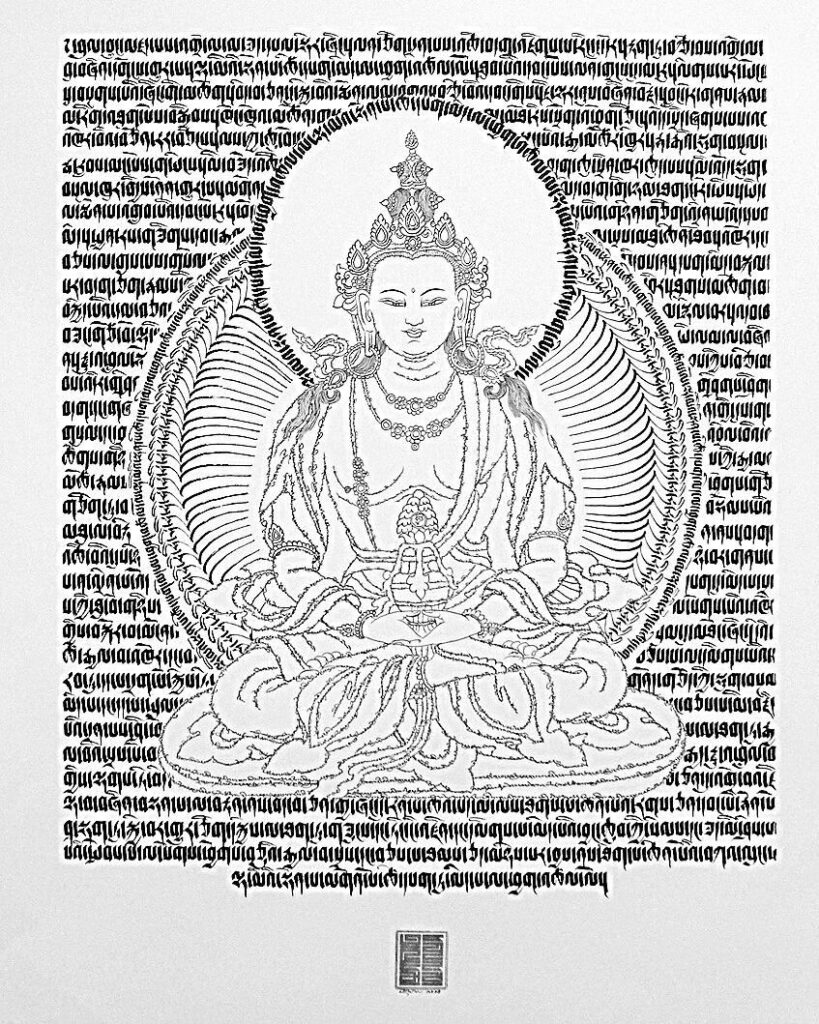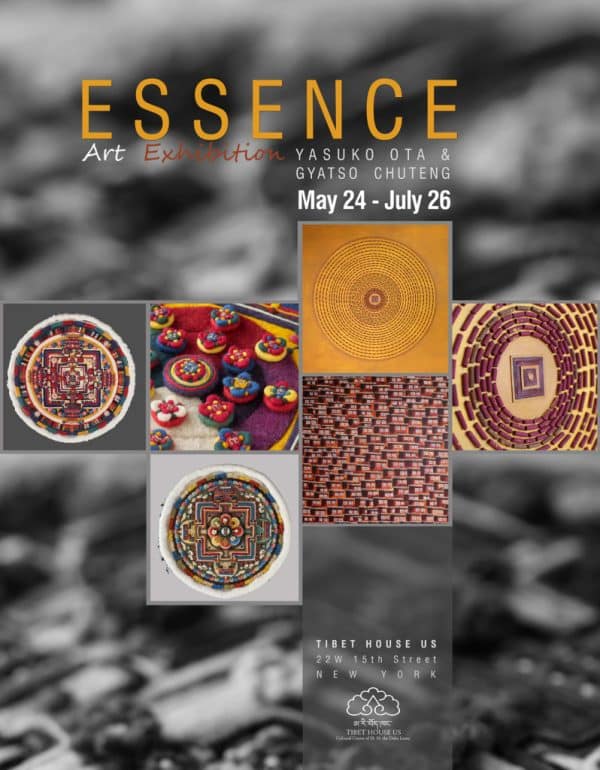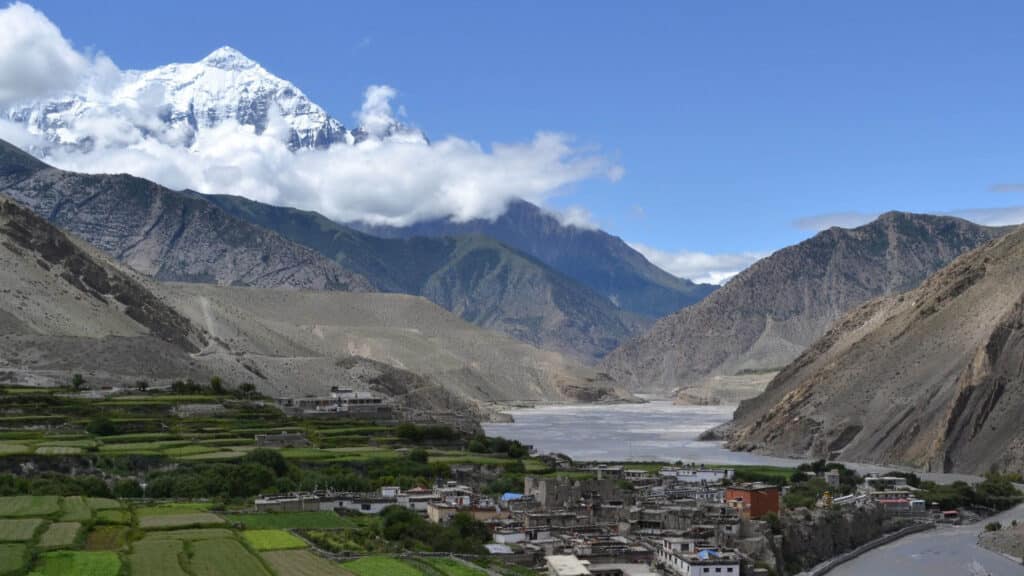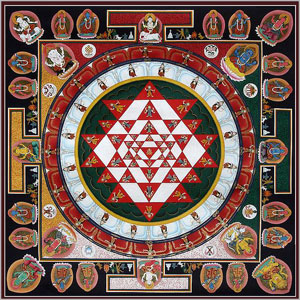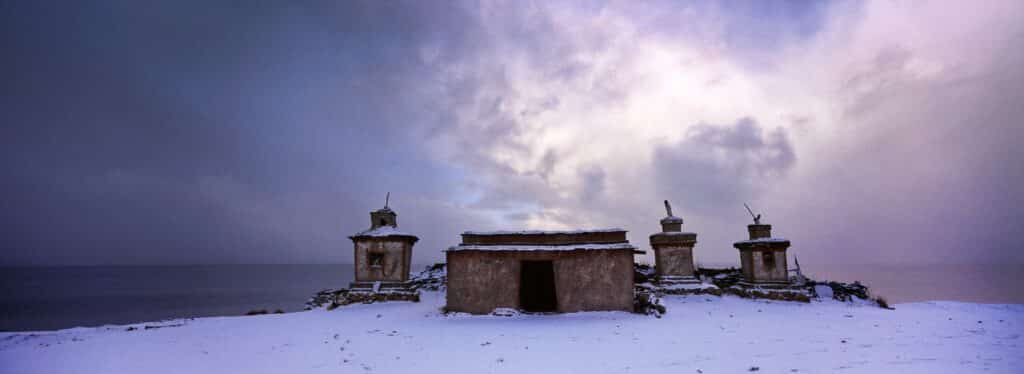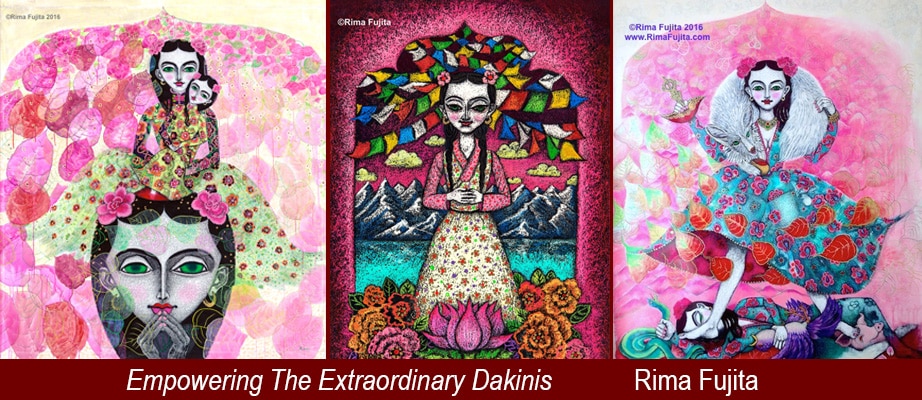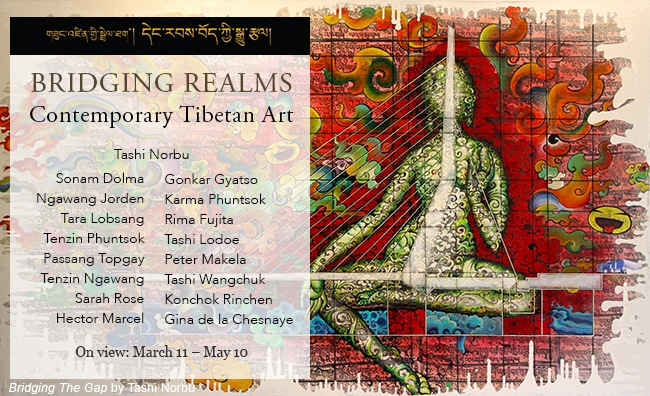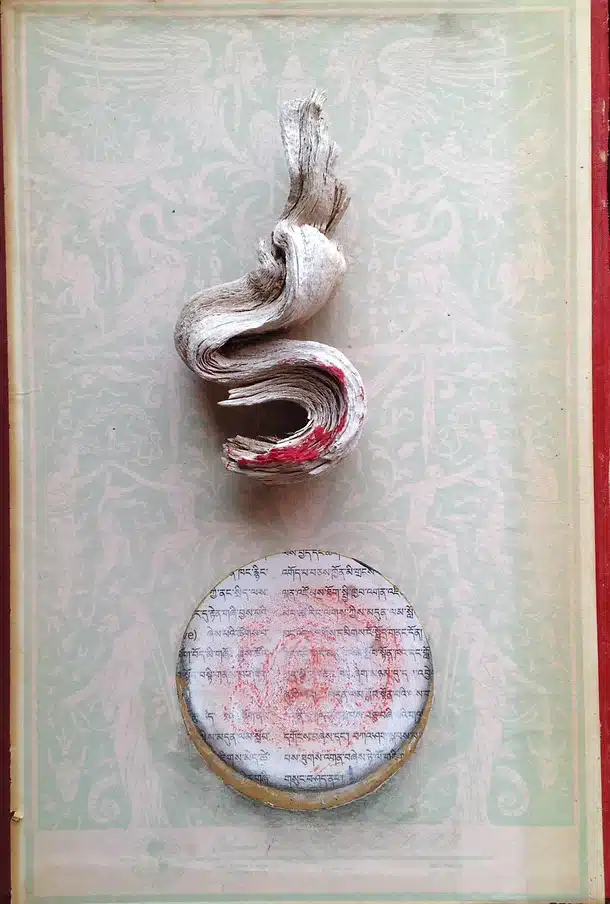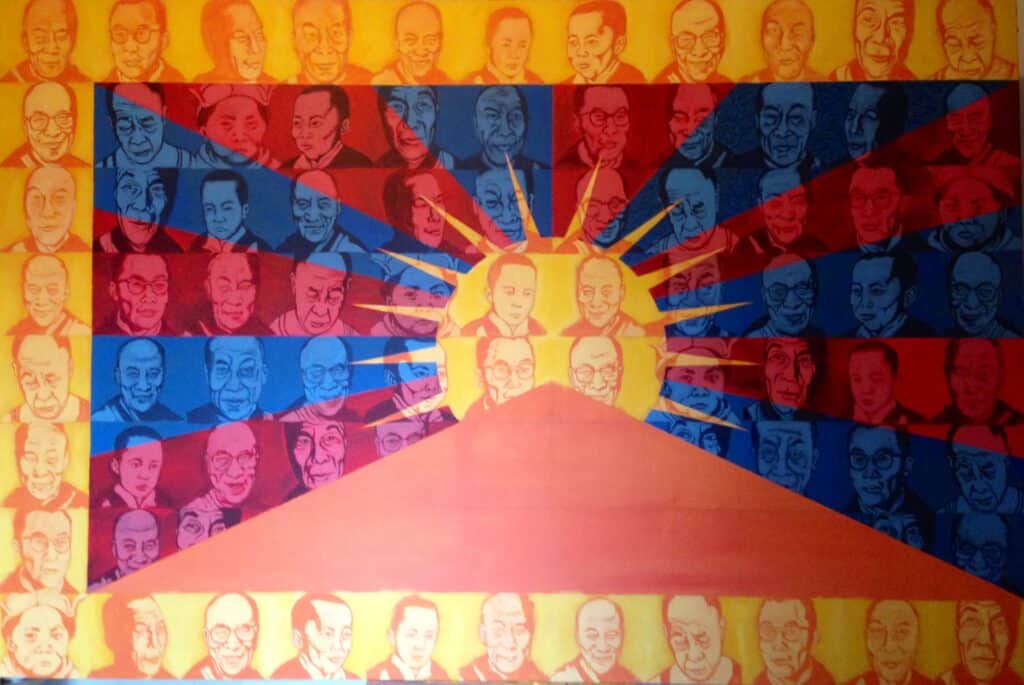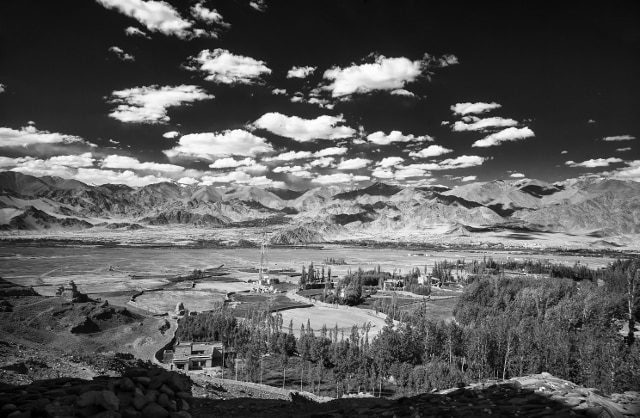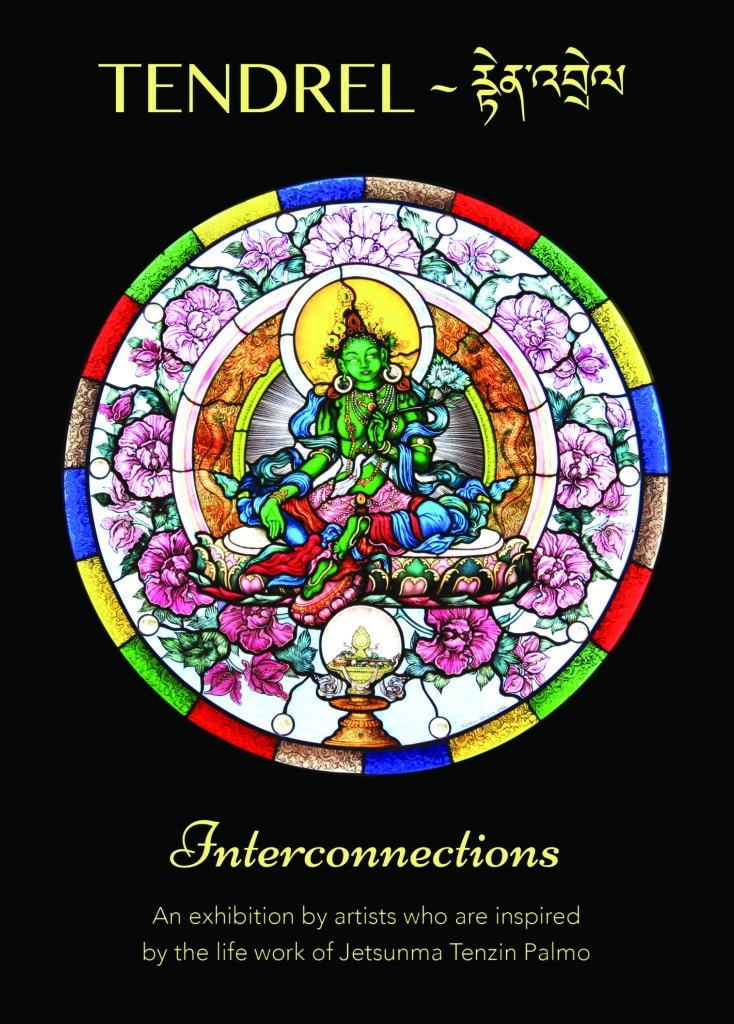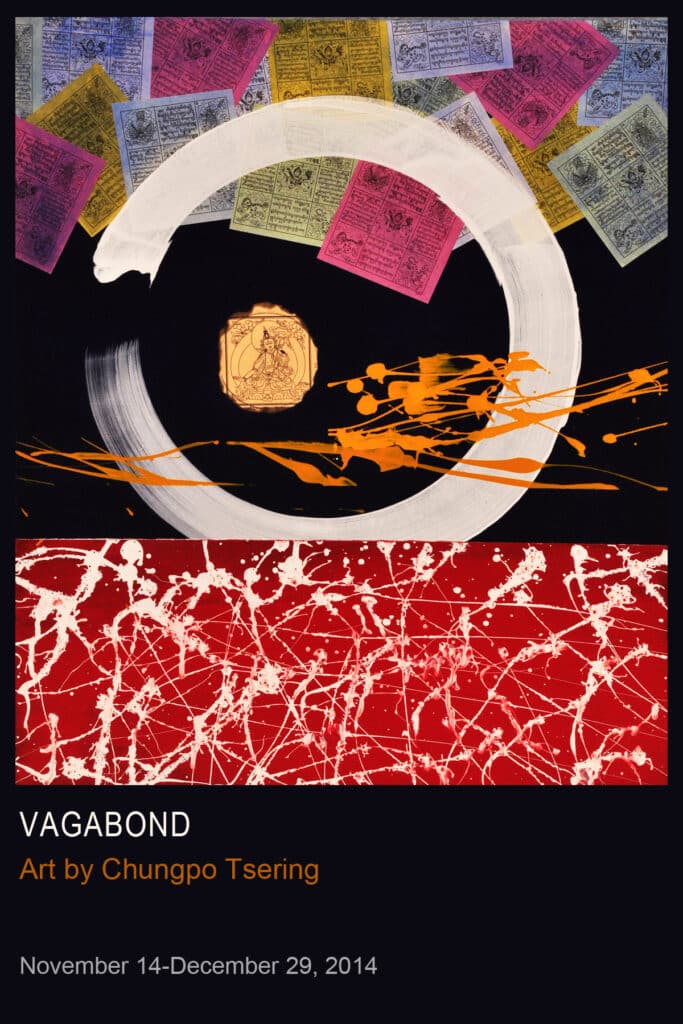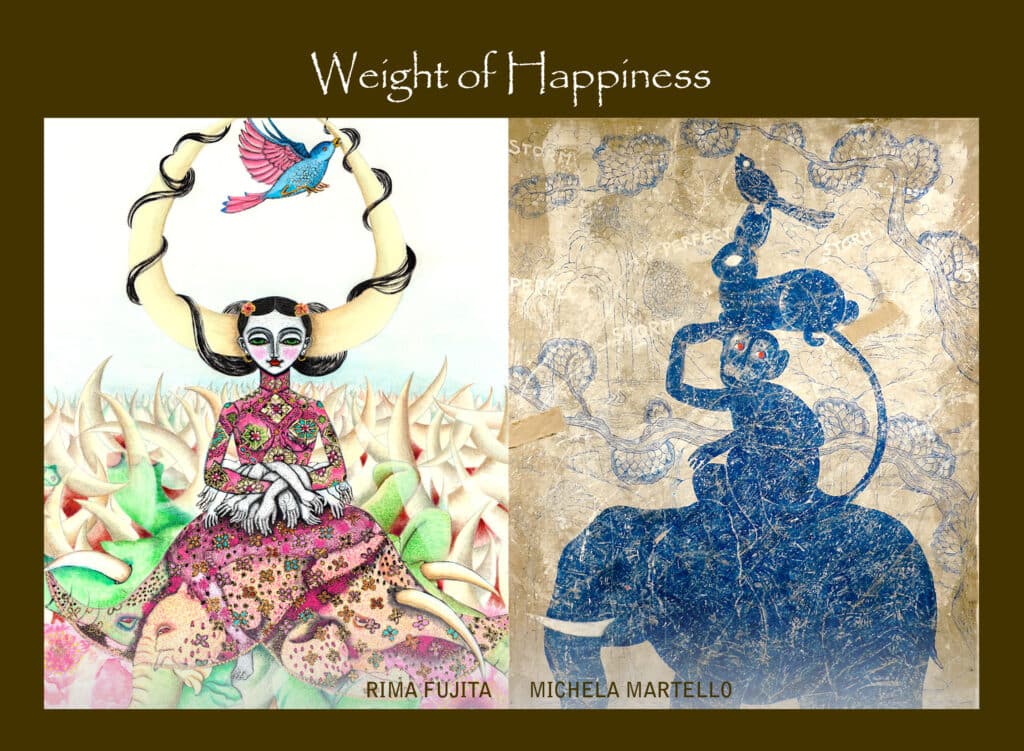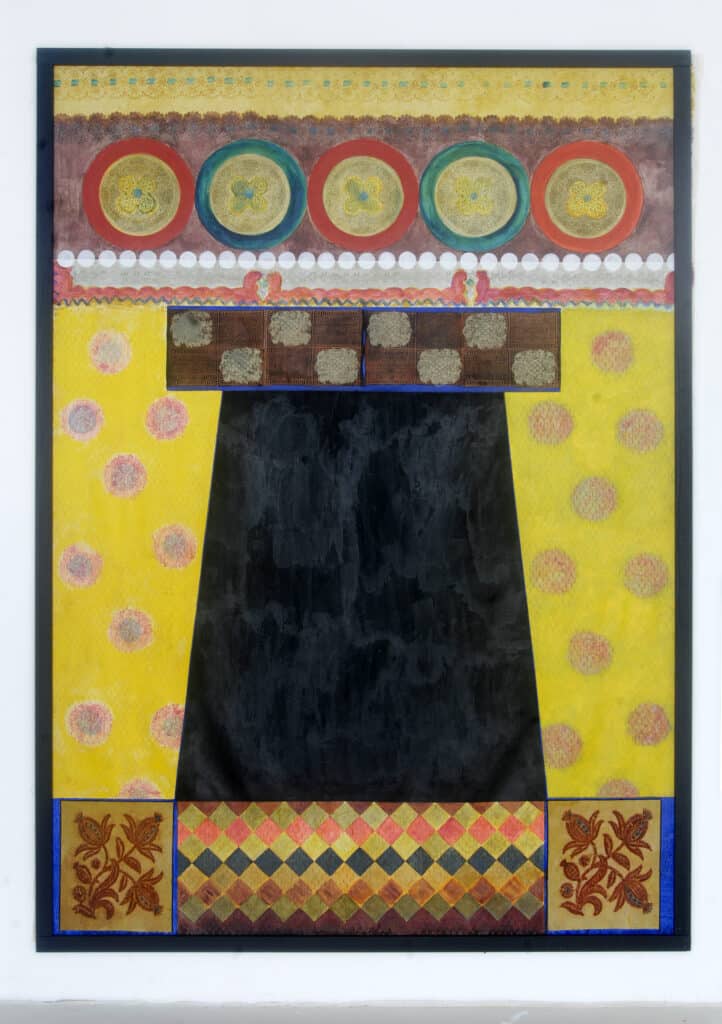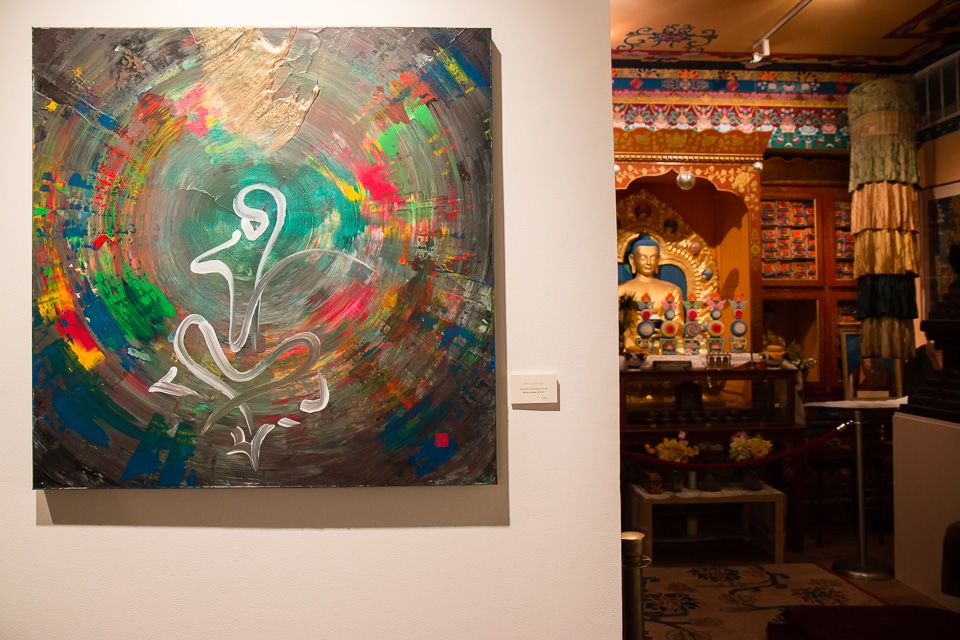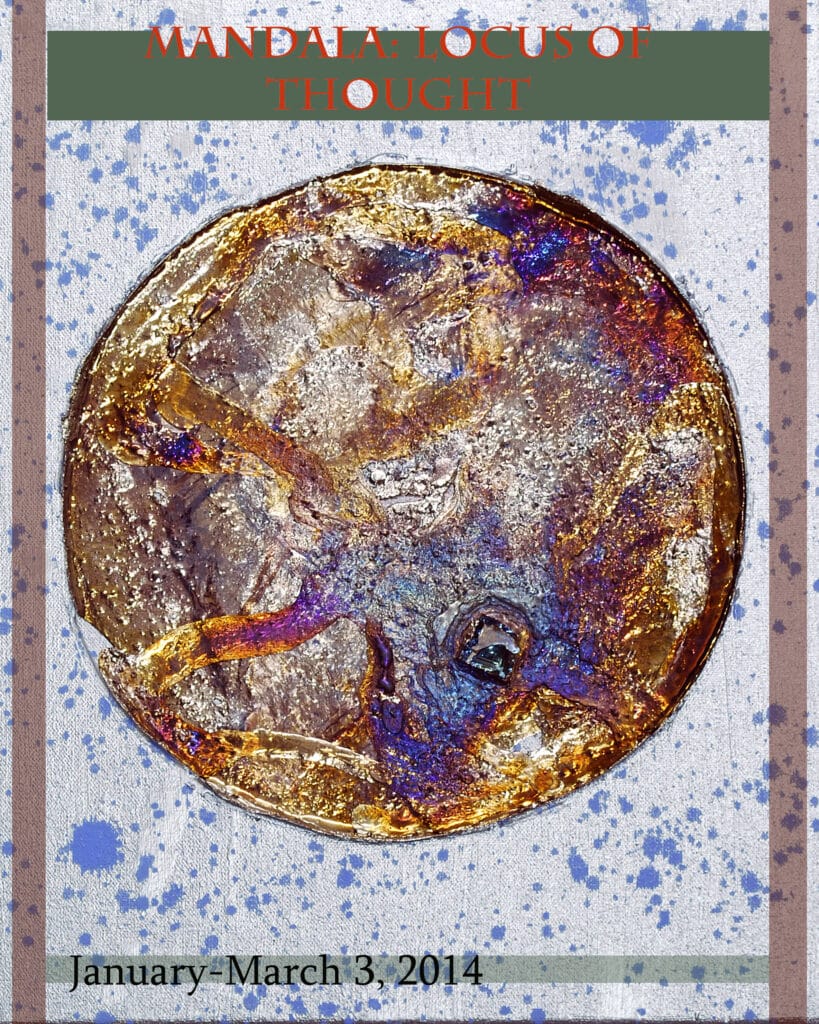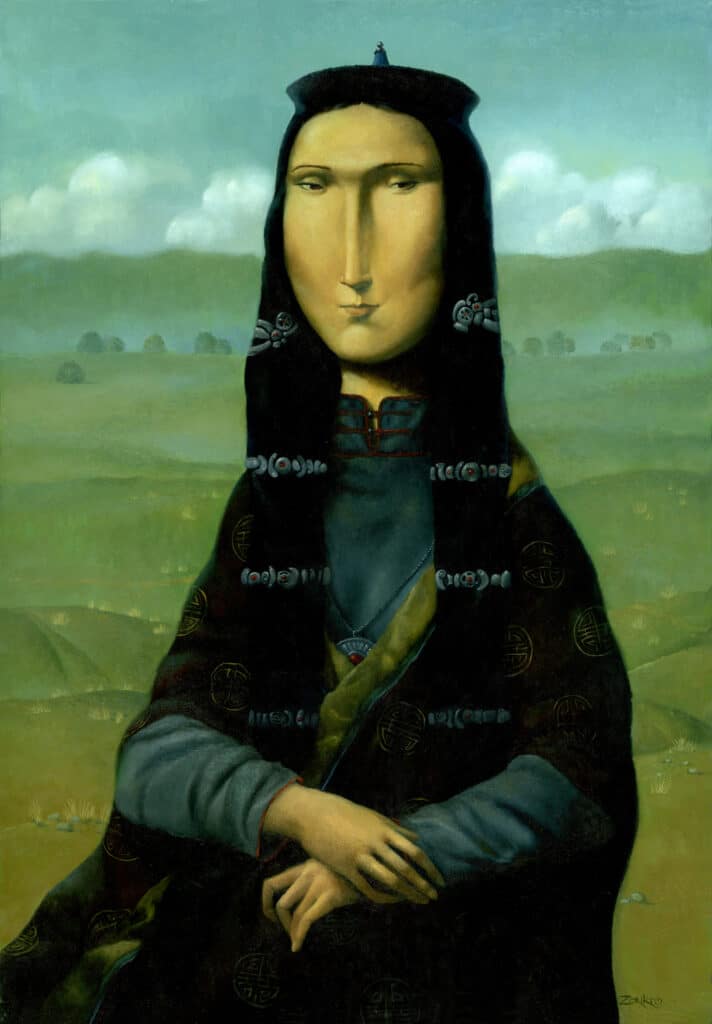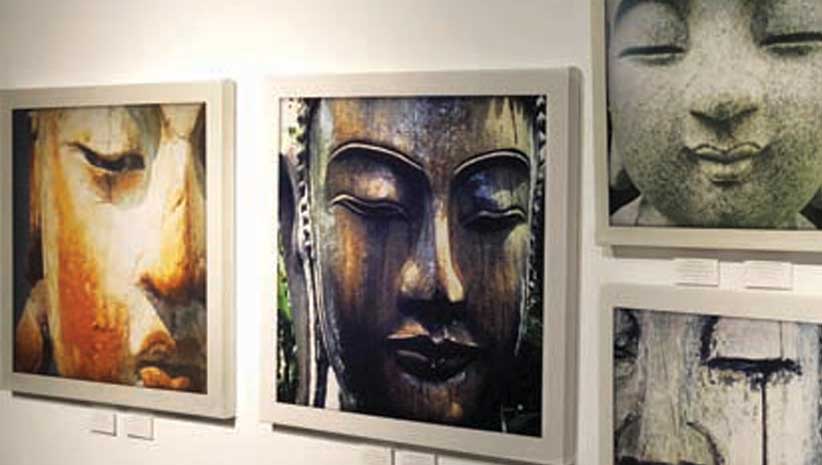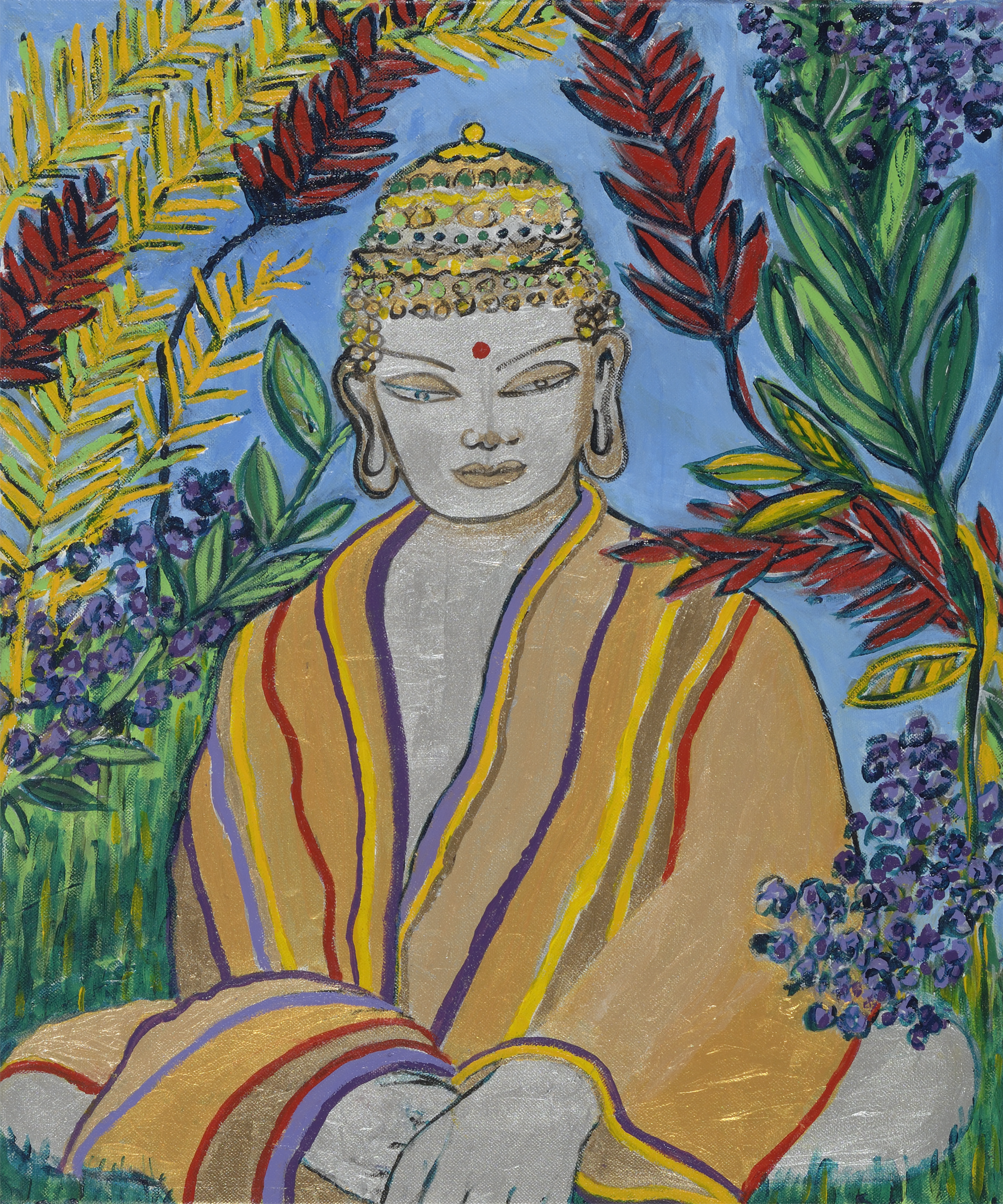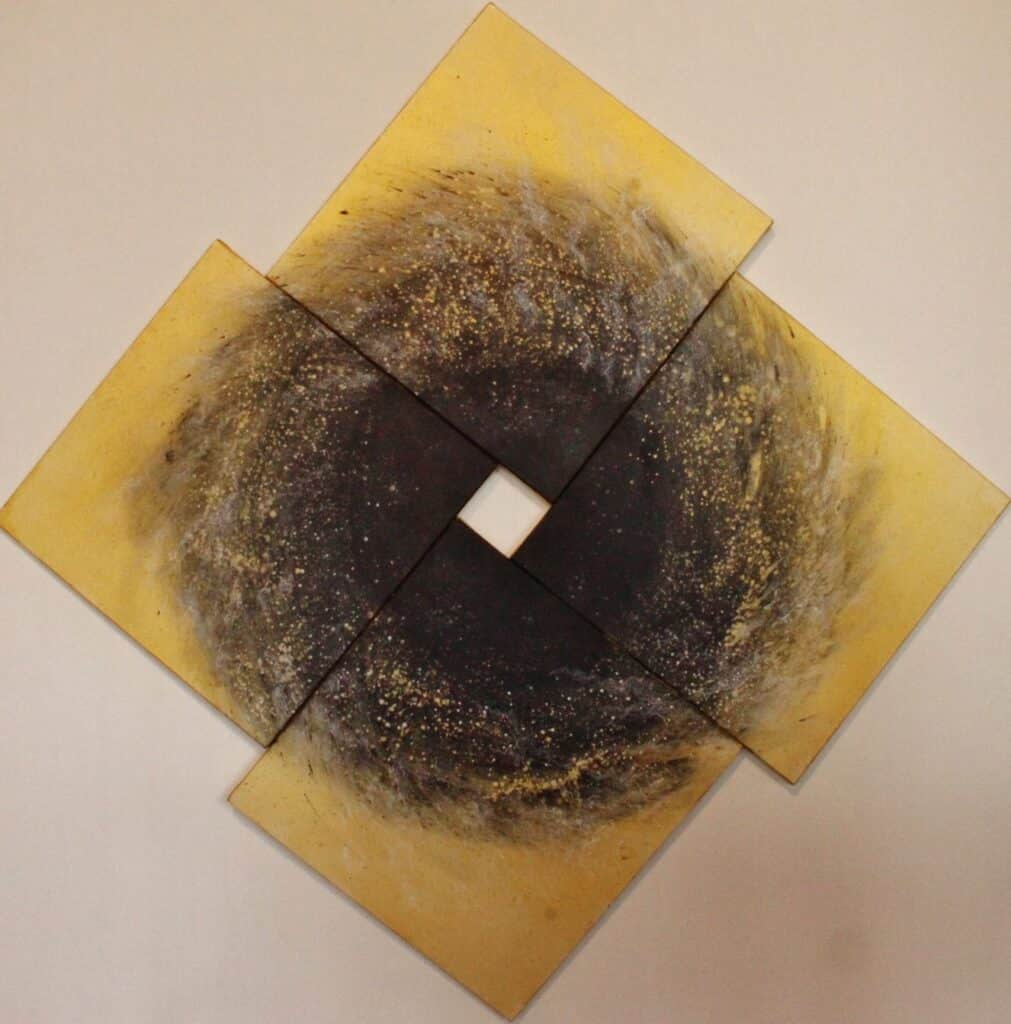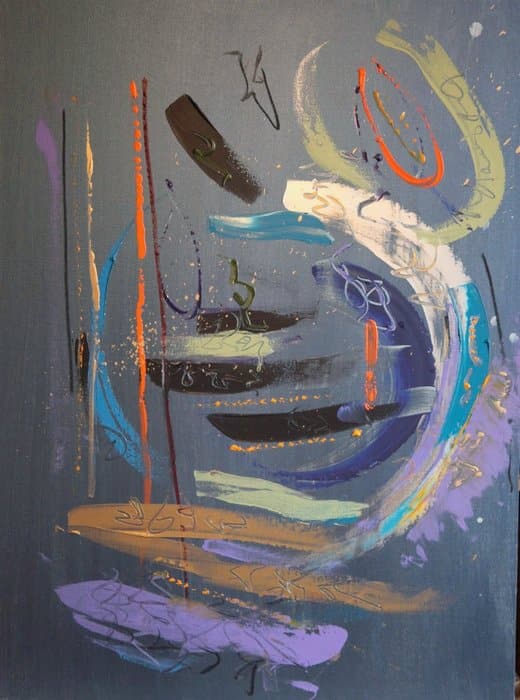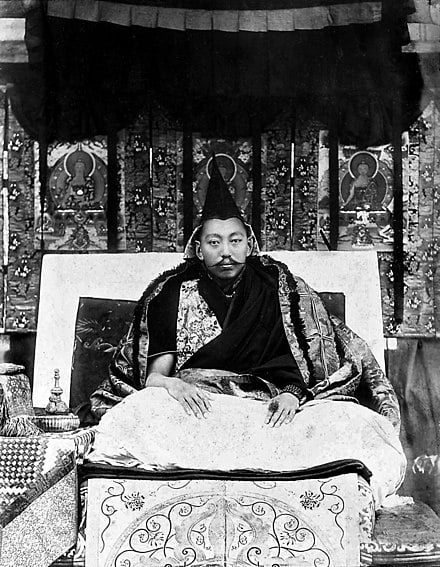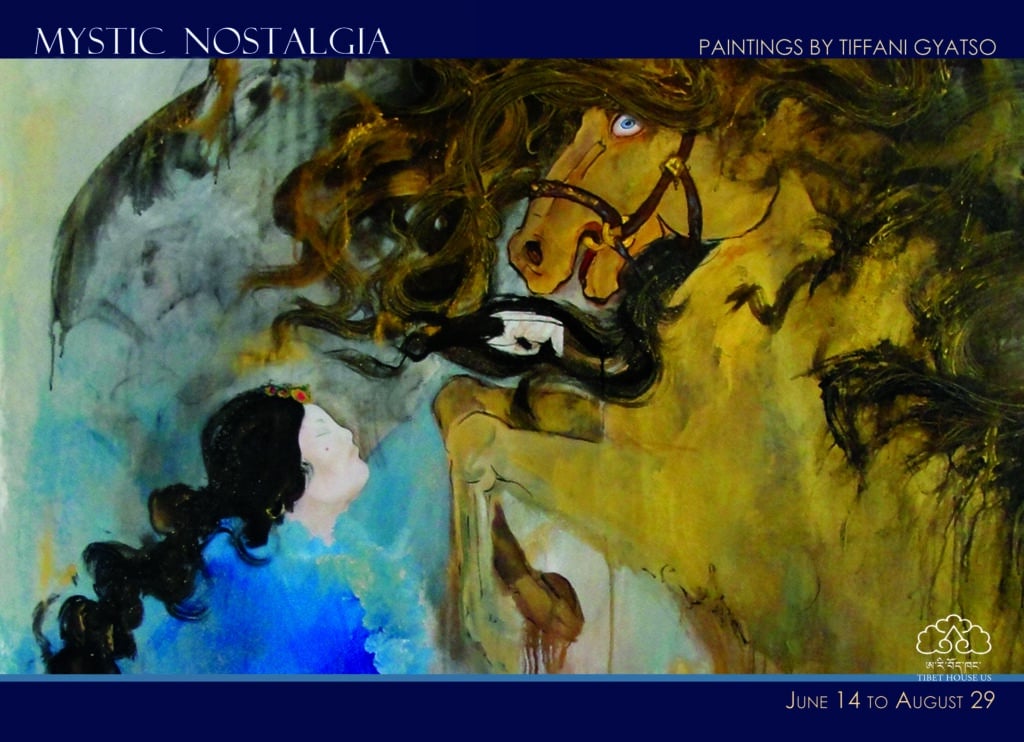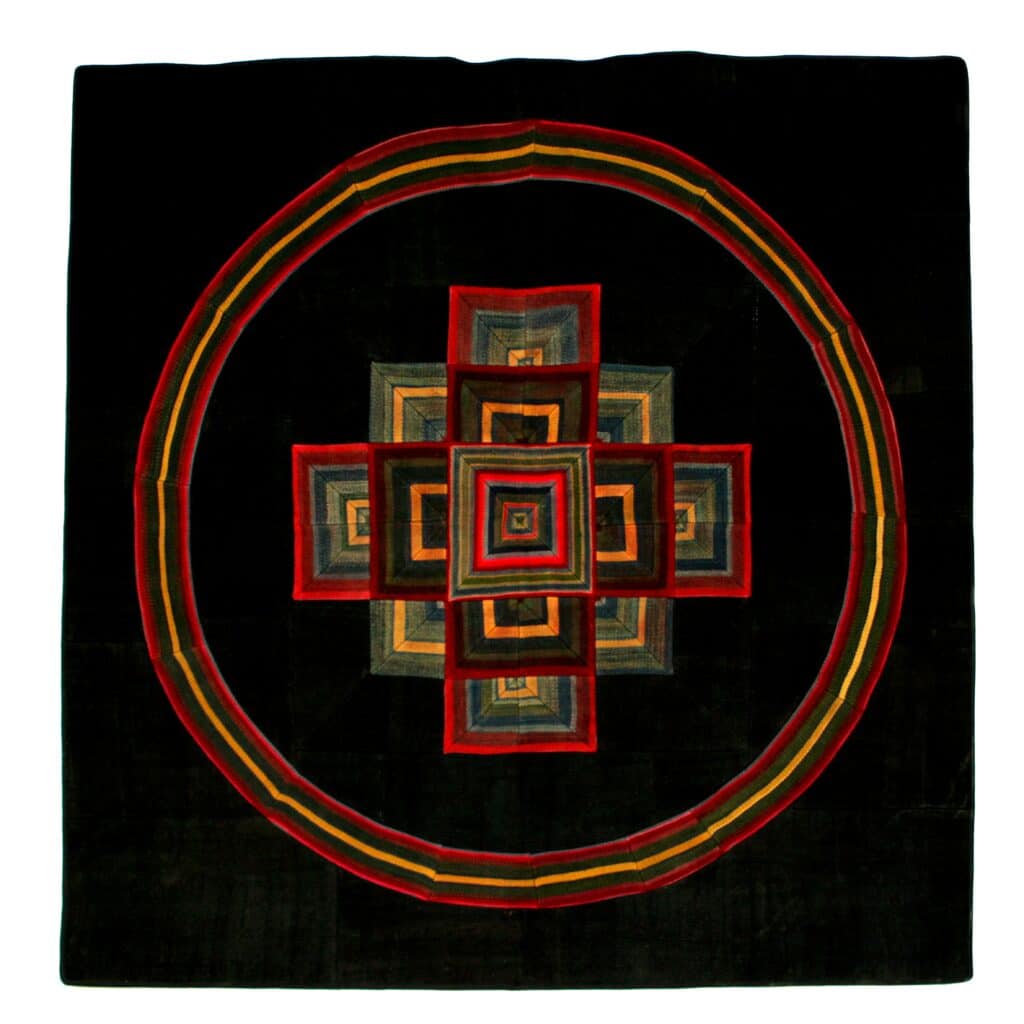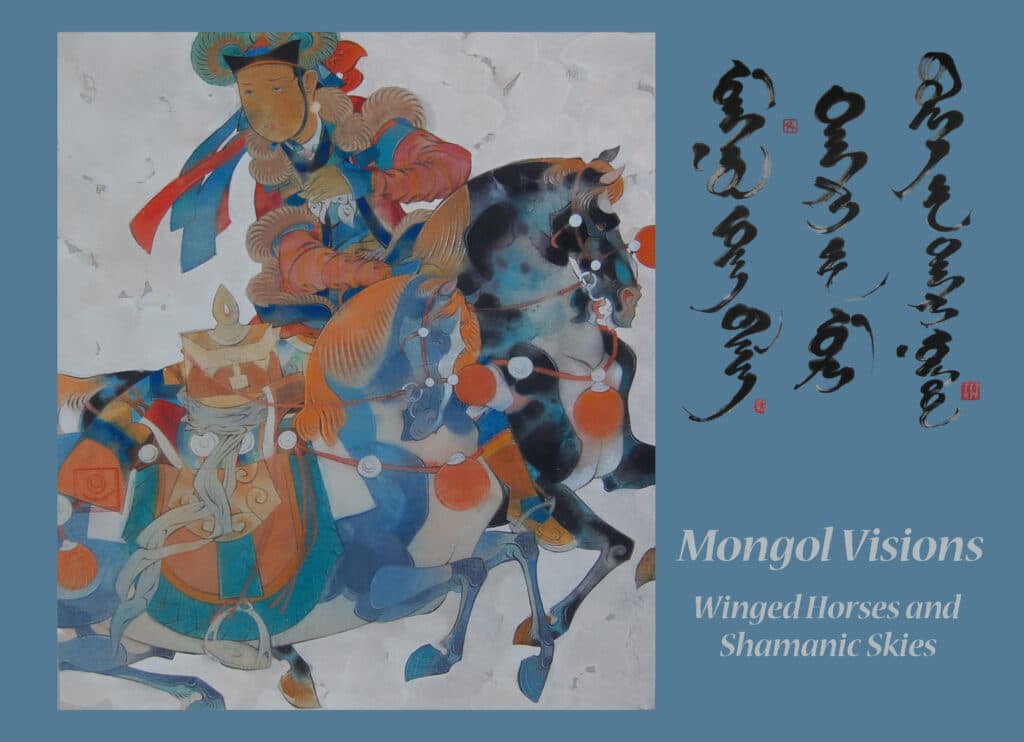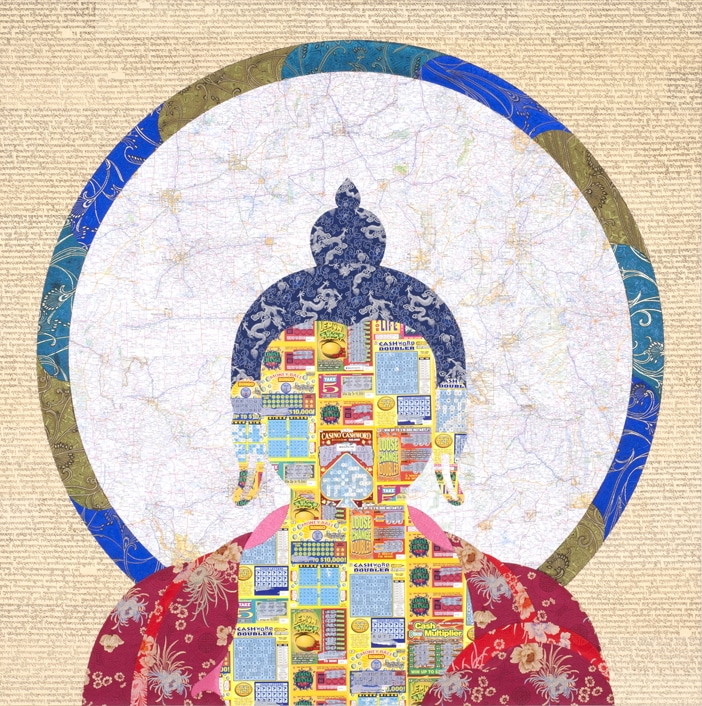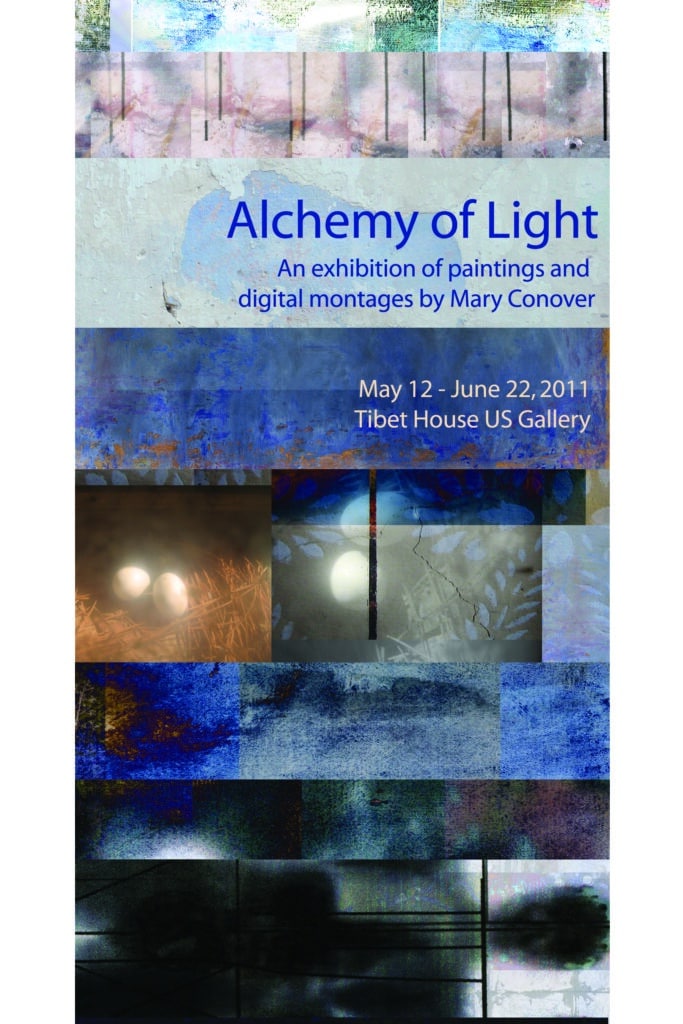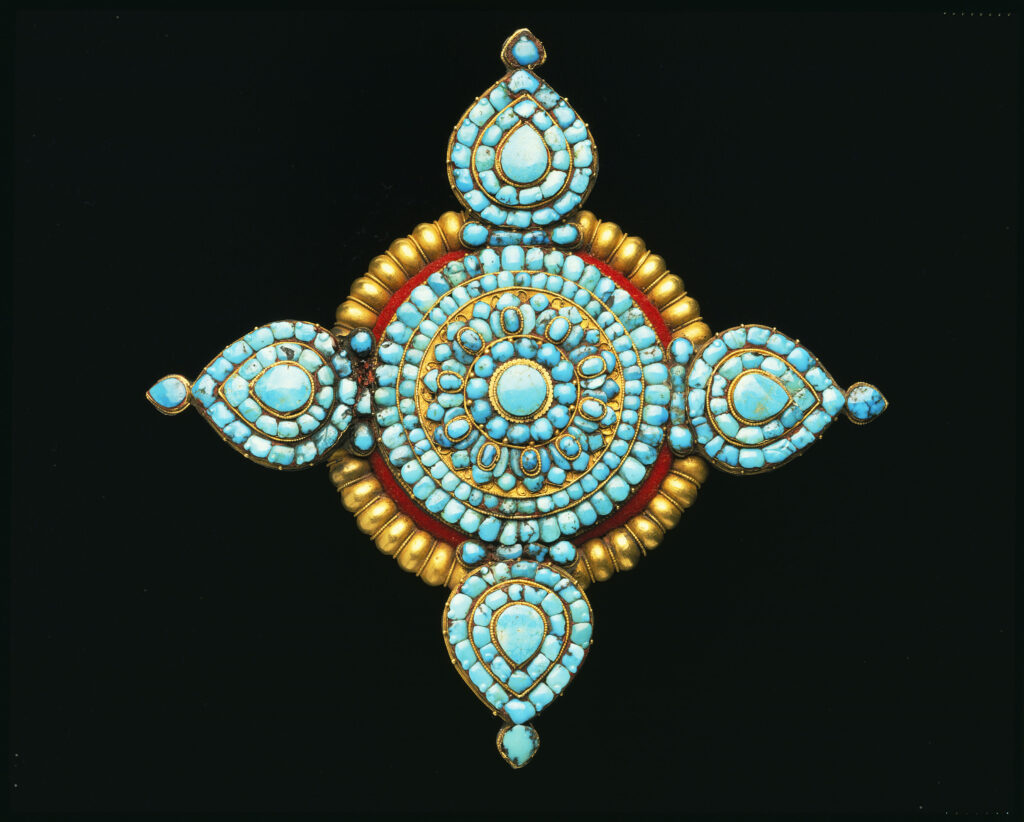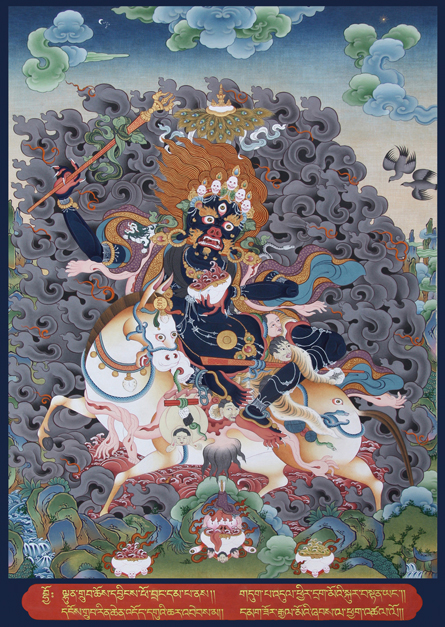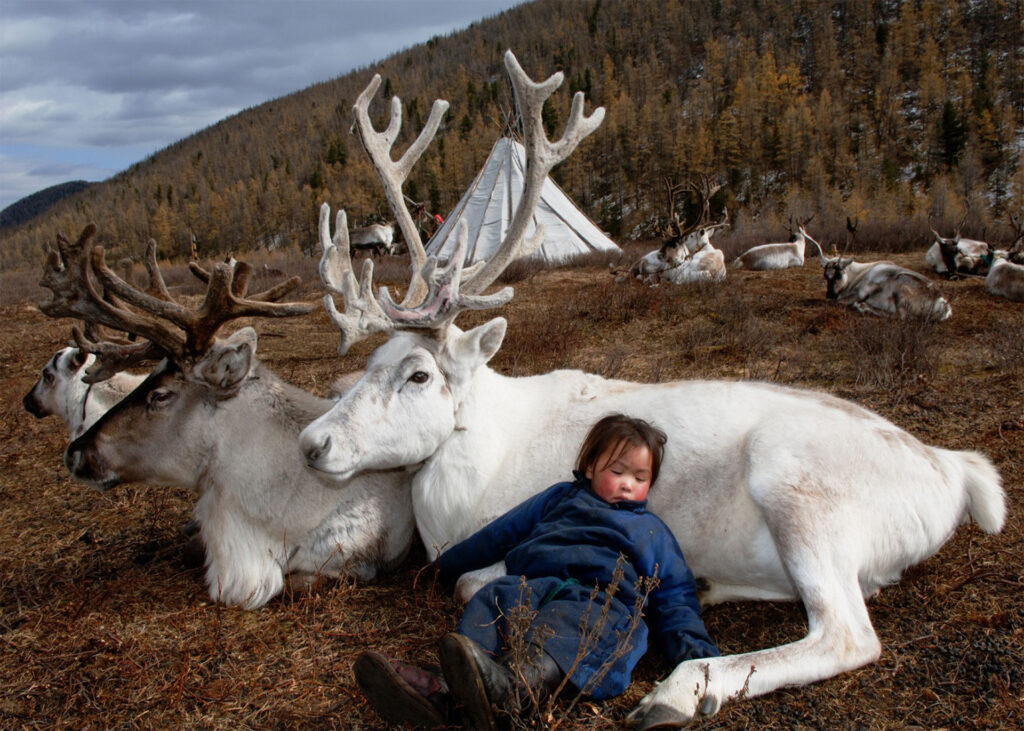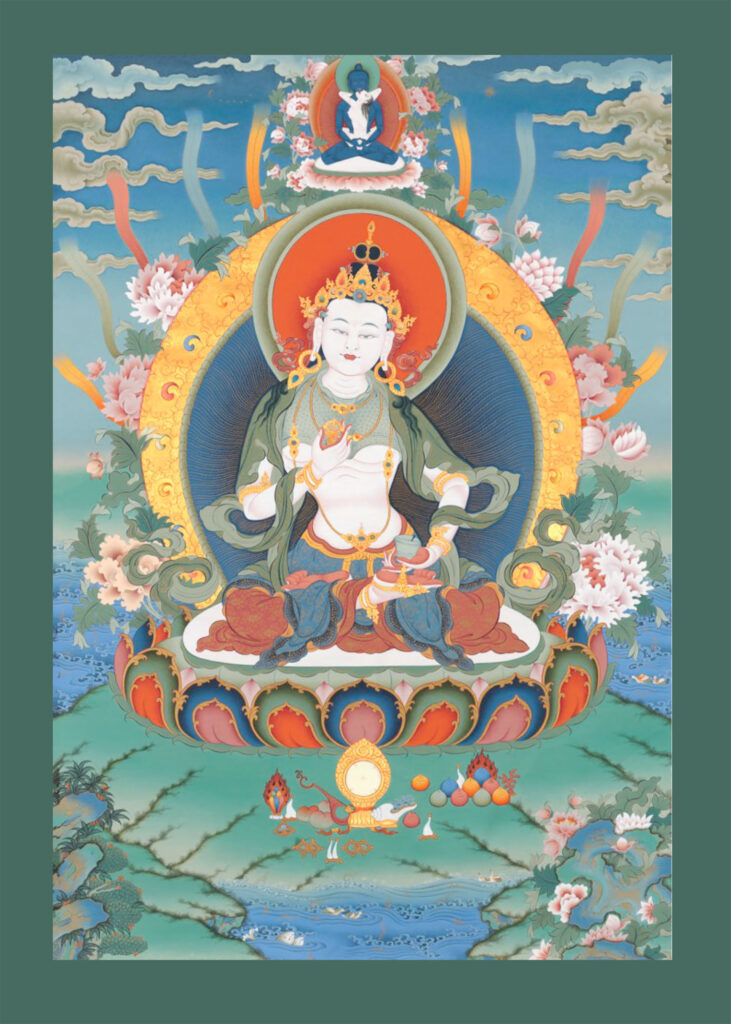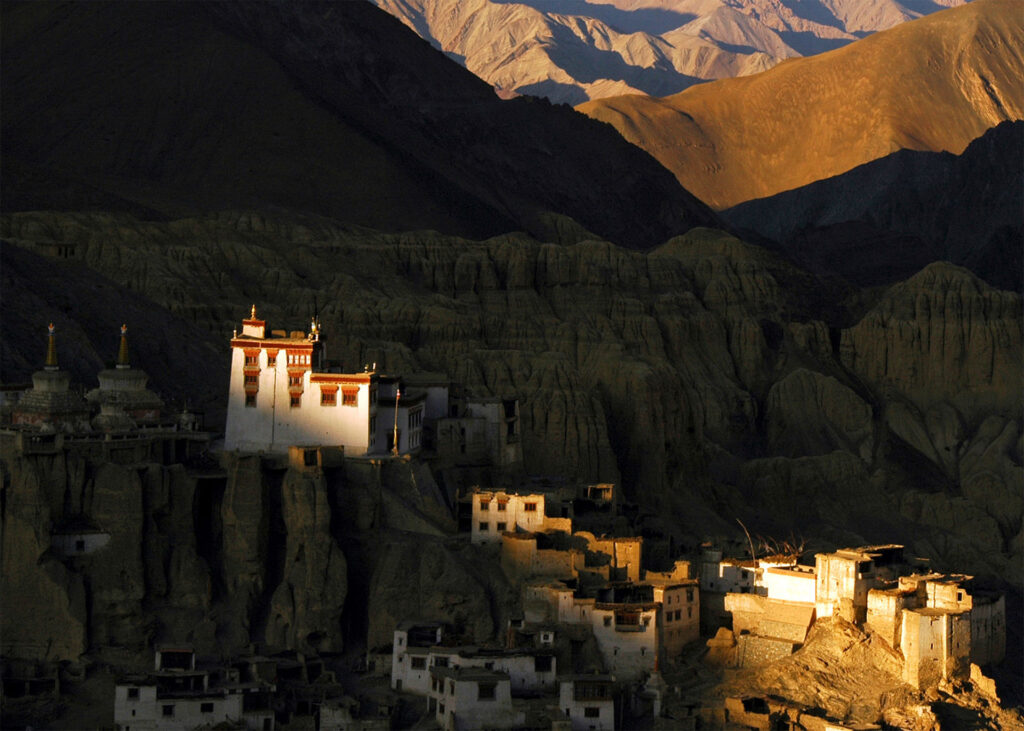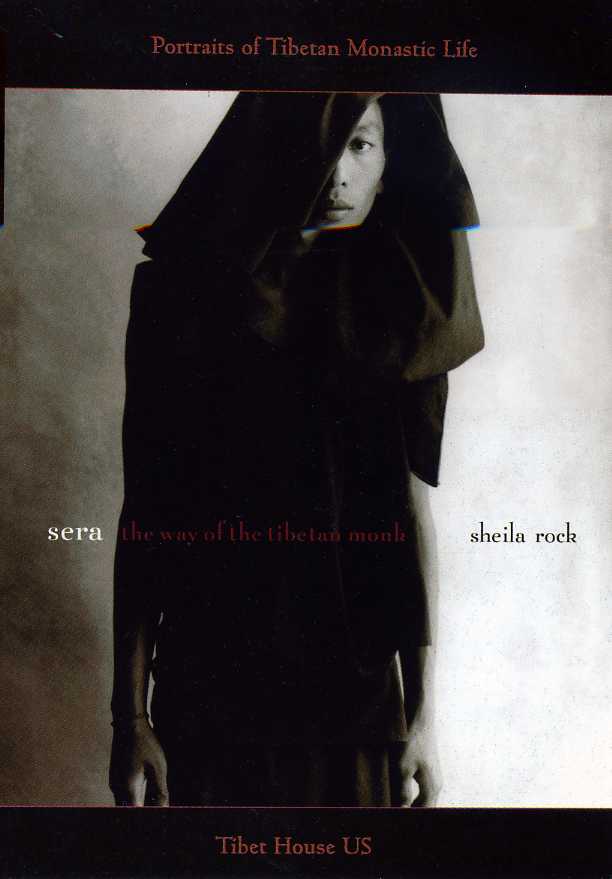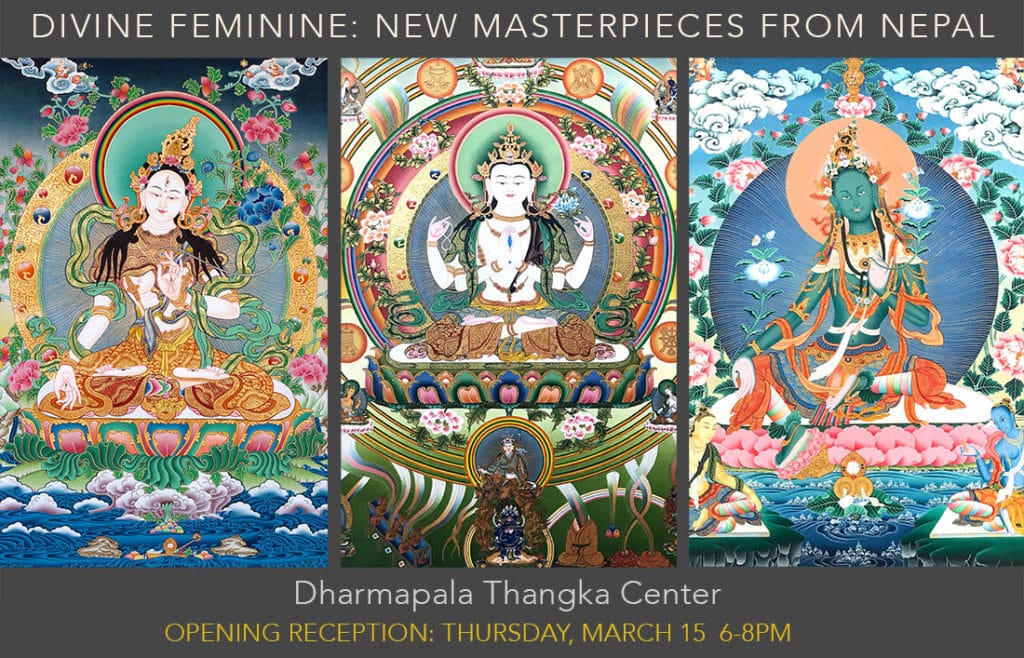OPENING RECEPTION: Friday, March 14, 2014 6-8PM
Tashi Norbu explores the imagery of modern Tibet, referencing the Buddhist notions of flux and change, interdependence, and absence. Educated as a traditional tangka painter and later in contemporary art, Tashi juxtaposes the contemplative aesthetics of tangka painting and calligraphy with the energy of abstract expressionism and pop culture. Using the unicorn as a metaphor for transformation, he sees change as an instrument for liberation: “Apart from being ruthless, change gives hope to us Tibetans. We have to grow out of our present situation, as the lotus grows out of the mud, by accepting change, nourishing the Buddha nature of ourselves in the modern world, and revealing our faults fearlessly. If we grow within ourselves, we gain freedom.”
STORYTELLER IN ART

Tashi Norbu is an independent Tibetan artist who currently resides in The Netherlands. He was educated as a traditional Tibetan thangka painter in the circle of His Holiness the Dalai Lama in Dharamsala. He completed his art studies at the Saint Lucas Academy of Visual Arts in Ghent, Belgium. Norbu has developed into an artist whose work represents the fundamentals of Tibetan Buddhism alongside western art forms, ideas and icons.
The Art of Tashi Norbu
Given Norbu’s early education as a traditional thangka painter in the circle of His Holiness the Dalai Lama, the core principles of thangka painting remain evident in his contemporary work. Thangkas visualize in an iconic way the story of the Buddha an His enlightenment, as well as stories about the gods. They are a means of visual storytelling. Traveling lamas used thangkas–which were mostly painted on scrolls–to teach about Buddhism. When they arrived at a village, they unrolled the thangka and used it to illustrate a story.
Thangkas, Buddha paintings, and sculptures follow an exact grid of measurements and proportions in order to establish continuity and a correct transmission of figures. In original thangkas, the expression of the painter was invisible, because the story, not the painter, needed to be the focus of attention. This is the reason that traditional thangkas are created anonymously. In modern art, however, it is the opposite: individual expression and the signature of the artist are explicitly present and important.
Norbu’s oeuvre tells the stories of the Buddha and Buddhist philosophy, but also stories of modern life from a Buddhist point of view. He combines both modern and traditional icons. Because he currently lives in Holland, many Dutch icons are incorporated in his paintings. A number of his paintings and collages may be read as a series. The longer one looks, the more one discovers: wooden shoes, tulips, wind mills, traditional costumes, dolls, cars, mobile phones, airplanes and laptops. Everything is possible in the artwork of Tashi Norbu, yet it is clearly created by a trained artist who has learned the fundamentals of painting.
The modern thangkas and Buddhas of Tashi Norbu are often humorous and entertaining. His Holiness the Dalai Lama as spiritual leader often employs humor to great appreciation.
Tashi Norbu constantly seeks to explore the ways of western art that inspire him, in combination with Tibetan motifs and patterns. He aims to bring the energy of abstract expressionism in harmony with the meditative and reflective spirit of Buddhism. Tashi Norbu has a studio in Wormer (9 Pillars Contemporary Art Studio), close to Amsterdam. In 2008 he founded Tibet House Holland, an organization for Tibetan art and culture. In cooperation with the International Tibet Art Movement, he organized the 2009 exhibition Tibet Art Now in Amsterdam to honor a visit by His Holiness the Dalai Lama.


